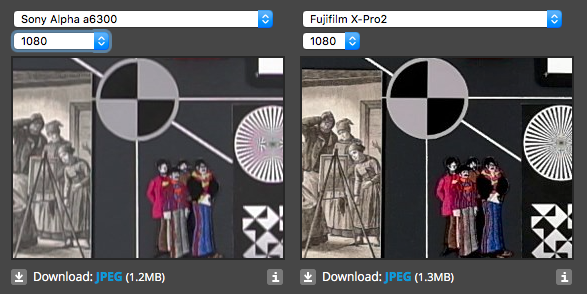
frontfocus
-
Posts
309 -
Joined
-
Last visited
Content Type
Profiles
Forums
Articles
Posts posted by frontfocus
-
-
@Andrew Reid thanks for your input! Are you really using an X-Pro2 for video? (I though I read somewhere that you considered buying one)
It looks like Fuji has done their homework on image/video quality. What is missing, is the usability and interface. I guess it's still not possible, to first see your 16:9 frame, before starting video, is it? (I think with 4K and a few improvements to the usability, the upcoming Fujis could really make fun shooting video on! )
-
On 8 April 2016 at 0:12 PM, Ebrahim Saadawi said:
M3 & t6s have a completely different CMOS chip from the one in the 80D. t6s/m3 are regular imaging sensors with a punch of phase detection AF points scattered on top (about a 100), the 80D uses each single pixel as a phase detection AF point, so it's about 40 million points vs a 100, that's the technology behind Canon DPAF. The 80D sensor has a significant pump up in dynamc range & lowlight performance due to the new On-chip ADC converters as on the 1DXII sensor. In other words, AF isn't great on the Canon models below 80D. DPAF is only available in the 70D, 80D, 7DII, 1DXII, C100, C300.
That's not how it works.
There are not 40 million AF points on the 80D but 40million half pixels. you need many of them to get a phase information.
Same goes for OSPDAF (what all other sensors use). You need to mask hundreds if not thousands of pixels for one single AF point. So there hundreds of thousands AF pixels on those sensors too.
But yes, the 80D seems to have finally caught with Sony designed Exmor sensors when it comes to read noise at low isos (dynamic range)
-
Now that the dpreview is out, it's easier for many of us to do some more comparison.
http://***URL removed***/reviews/sony-a6300/5
Of course the A6300 blows away the X-Pro2 with it's 4K, log profile and other stuff, but looking at the 1080p samples is interesting:

The X-Pro2 looks much more detailed (at some points over sharpened), but all in all it looks really nice, especially if you know how older Fuji cameras did.
Any other thoughts/news?
-
@Andrew Reid you wrote some time ago, that you really consider using the Fuji X-Pro2 for video. Are you really saying Canon is/got that bad? (for me, Fujis video quality was probably the worst with the older cameras)
-
6 hours ago, theSUBVERSIVE said:
I've read in an interview that although capable the X-PRO2's form factor doesn't allow reliable 4K, it would overheat, it would need a different body for that, so it needs to wait until X-T2 probably.
And I though overheating with 4K was the way to go since most manufacturers go that route
 (but yes, I heard too, that 4k produces too much heat on the X-Pro2)
(but yes, I heard too, that 4k produces too much heat on the X-Pro2)
-
20 hours ago, Andrew Reid said:
Great detail, superb film simulation / colour out of the box.
Very interesting.
Stupid question, but how would you rate the X-Pro2 video (codec, details, color etc.) vs. the A6300 in 1080p?
This is, because we know the X-T2 is having the same sensor and 4K (and video features), so it might give us an idea how it performs (personally I think, that most Fuji moire problems will go away with moving to 4K)
-
The X-Pro2 for video? Interesting.
Personally I am waiting for the X-T2 which is said to be more video centric (probably the 6k read out with 4k downsampling from the A6300) and have more video features. (personally I am hoping for a non fixed touchscreen, more video settings and feature like peaking and zebra)
-
Quote
On the Sony A6300 the 425 photodiodes substituted by AF pixels don’t create dead pixels..
425 missing green photodiodes out of the millions on the sensor just need to interpolate from their neighbours a little more.
That's not how it works. We are not talking about 425 photodiodes. We are talking about 425 focus points. And it needs more than one pixel for an AF point.
There are hundreds of thousands of half masked pixels on those sensors and yes, it does impact noise performance.


Fuji X Pro 2 review - a Leica killer. Also a surprisingly capable Super 35mm cinema machine? Let's find out...
In: Cameras
Posted
What I meant was, that (with older models), as soon as you hit the movie record button, it jumped into recording and there is no way, to few the exact crop beforehand. That's one of the many small things that made me not use the X-T1 for video (well, besides the terrible 60p quality)